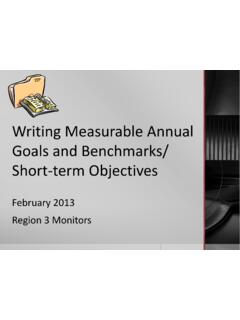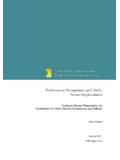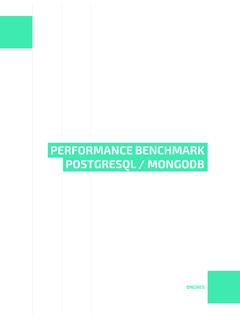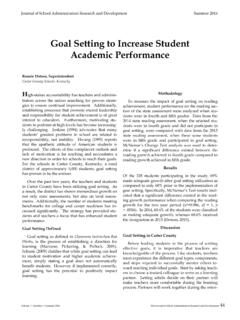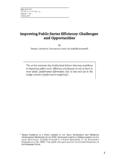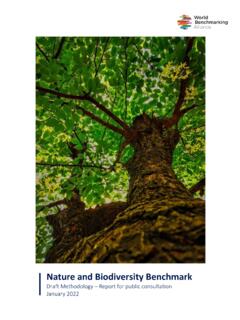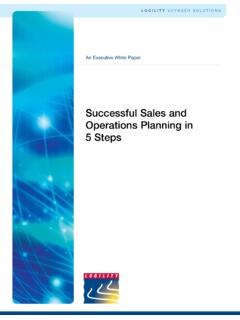Transcription of Implementing Alternative Assessment: Opportunities and ...
1 The Educational Forum Volume 71 Spring 2007 221 Implementing Alternative Assessment: Opportunities and Obstaclesby Carole Janisch, Xiaoming Liu, and Amma AkrofiAbstractThe theoretical framework for using Alternative assessment in the classroom includes considering learners as constructors of knowledge; find-ing authenticity in materials and activities; employing dynamic, ongoing evaluation tools; and empowering students. By putting these ideas into practice, individual attributes of initiative, choice, vision, self-discipline, compassion, trust, and spontaneity can be promoted in students. The oppor-tunities and obstacles associated with Implementing Alternative assessment in the classroom, as seen through the eyes of a group of graduate students, are presented freedom factor as defined by Graves (2002, 4) is an amalgam of a number of components: initiative, choice, vision, self-discipline, compassion, trust, and spon-taneity.
2 As part of quality education for students in a democratic society, these would seem to be desirable traits to promote in individuals in our classrooms. However, as noted by Graves (2002), these may not be traits that can be effectively promoted in a climate of high-stakes testing. High-stakes testing is widely believed to be the force behind educational reform and, presumably, resulting quality education. Though policy makers and the public judge the impact of educational reform efforts by comparing changes in test scores over time, testing experts question the use of high-stakes testing as the public benchmark of educational quality (Linn 2000). Moreover, the consequences of testing and testing outcomes for many students particularly students of diverse cultural and linguistic backgrounds are onerous.
3 Labeling students and the gate-keeping effect of testing programs most seriously impact this population of students (Bauer 1999; Au 2000; Garcia and Pearson 1994; Kohn 2000). According to Kohn (2000), testing is particularly 222 The Educational Forum Volume 71 Spring 2007harmful to low-income and minority students. In fact, socioeconomic status accounts for most of the variance in test scores from one student to the , Assaf, and Paris (2001, 482) stated that reform resulting from testing is an illusion that masks an intrusion of testing into good teaching and, by the authors exten-sion, diminishes the use of Alternative assessment. Alternative assessment which also is referred to as classroom-based, qualitative, informal, or performance assessment is a way to gauge student learning other than formal testing.
4 Alternative assessment exhibits several distinguishing characteristics: Alternative assessment is situated in the classroom with teachers making choices in the measures used. Alternative assessment is based on a constructivist view of learning whereby the student, the text, and the context impact learning outcomes. Alternative assessment is predicated on the view that learning processes are equal to, if not greater than, the resulting products. Classroom-based assessment has the distinction of immediately informing teachers and students, as well as parents, of student performance on an ongoing basis. Unlike test scores with delayed reporting and derived scores whose interpretation is often complex and represents a one-time snapshot of performance, Alternative assessment is more directly useful to all stakeholders.
5 Alternative literacy assessment methods include such practices as teacher anecdotal/observation records, teacher and student reflective journals, student reading logs, tape recordings of student oral reading, teacher-student-parent conferences, and portfolios (Garcia and Pearson 1991; Graves and Sunstein 1992; Rhodes and Shanklin 1993; Tierney and Clark 1998; Valencia 1998; Serafini 2001; Flippo 2003). Other measures of inquiry into student performance beyond cognitive information include those means by which affective information, such as interests and attitudes, is obtained (Flippo 2003).The close alignment of instruction and assessment within an authentic context or a situated context is effective in determining what children know and can do. For example, through the processes associated with portfolio assessment student selection of the best evidence of their learning, reflection on why a piece is best evidence, and a statement of future learning goals teachers are informed about student learning and can make choices about subsequent instruction that will benefit the student.
6 Or, when children write in journals about their reading books of choice, teachers can take this information, observe associated behaviors, and make a diagnosis about student instructional needs. Promoting Alternative Assessment In teaching graduate courses in literacy assessment, the authors assiduously pro-mote the use of Alternative assessment or classroom-based assessment. Their students learn the theory that underlies the use of Alternative assessment, explore the differences between testing and Alternative assessment, understand the learner-centered nature of Alternative assessment, and see how these measures can be implemented in the classroom. Because these students have varying levels of knowledge and experience with testing and classroom-based assessment, they are encouraged to weigh testing against Alternative mea-sures given their own instructional context and within their own frame of reference.
7 Janisch, Liu, and AkrofiEssaysThe Educational Forum Volume 71 Spring 2007 223 The goal of the courses is to help participants develop a knowledge base that will lead to improved professional classroom decision making about children and their learning needs. Pearson (2003, 15) stated that professional knowledge needs to be broad and deep. Teachers need to use their knowledge to create just the right curricular mix for each and all .. and alter those approaches when the evidence that passes before their eyes says they are not working. A Tall OrderHoffman et al. (2001) surveyed teachers to determine how testing affects teachers, students, the curriculum, and instructional practices. The results showed that excellence in teaching may be threatened or compromised by high-stakes testing, and that Alternative assessment and classroom-situated measures of student achievement offer viable means of improving teaching and learning.
8 Therefore, helping university students in teacher prepa-ration programs, as well as in-service teachers, to understand Alternative classroom-based measures and be aware of the procedures and underlying policies of standardized testing is essential. The authors stress, however, that educators must be mindful of classroom and school realities regarding the measurement of student achievement. School and district mandates must be considered, as well as the preconceived opinions teachers may have of Alternative assessment and its FrameworkLearners as constructors of knowledge. Alternative assessment is compatible with the constructivist theory, which views learners as active constructors of knowledge (Estrin 1993; Shepard 2000). Meaning cannot be imparted from teacher to student; rather meaning is made, not given (Eisner 1999).
9 The sociocultural view of learning suggests that individu-als become proficient in learning by engaging in social interactions (Vygotsky 1978; Moll 1990; Shepard 2000). Alternative assessment has the potential to reverse the traditional paradigm of student passivity and replace it with student initiative, self-discipline, and choice. For example, during portfolio development, students collect their own work, select the pieces that are best evidence of their achievement and, finally, reflect on why they chose certain pieces over others (Hansen 1998; Valencia 1998). Through this process, students engage in self-evaluation and set goals for their learning. They are no longer defenseless vessels waiting to be filled with facts (Wasserstein 1994, 14). Instead, they are masters of their own learning and sense making (Graves 2002).
10 Authentic and situated in the classroom. Alternative assessment takes into account the classroom context and individual students progress. Assessment activities are part of the classroom environment and ongoing classroom practices, and provide specific feedback to teachers so that they can adjust their teaching and affect student learning immediately (Rhodes and Shanklin 1993; Roller 1996; Valencia 1998; Shepard 2000). Teachers do not have to set aside time for testing, because assessment is integrated with ongoing assessment. Because the student s entire learning process is re-corded, the teacher has an ongoing view of how students approach, monitor, and process reading and writing. Similarly, students engage in self-evaluation and self-reflection through the use of projects such as portfolios and reading logs, which enable them to keep Janisch, Liu, and Akrofi224 The Educational Forum Volume 71 Spring 2007track of their own learning.










